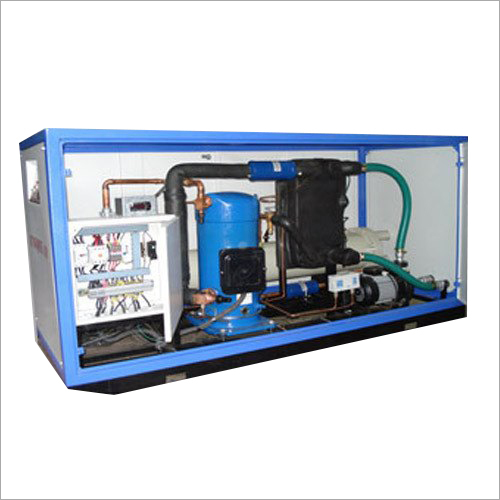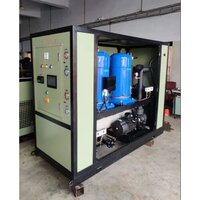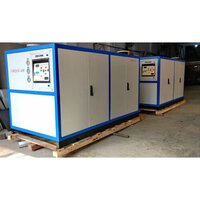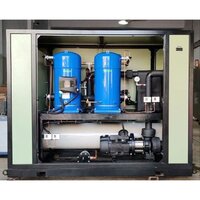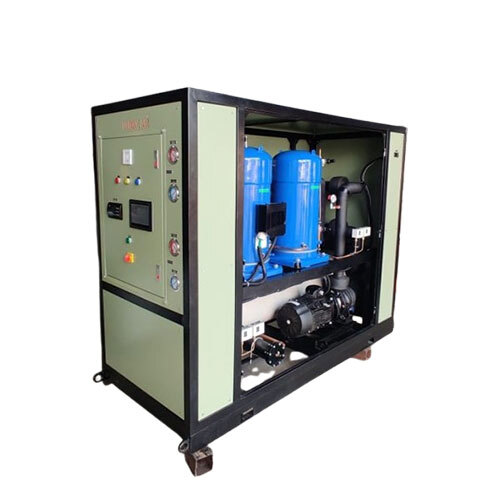Brine Chilling Plants
100000 INR/Piece
Product Details:
- Material Metal
- Size Standard
- Product Type Brine Chilling Plants
- Usage Industrial
- Condition New
- Type Brine Chilling Plants
- Power Supply Electric
- Click to View more
X
Brine Chilling Plants Price And Quantity
- 100000 INR/Piece
- 1 Piece
Brine Chilling Plants Product Specifications
- 1 Year
- Standard
- Industrial
- Metal
- Brine Chilling Plants
- New
- Electric
- Brine Chilling Plants
Brine Chilling Plants Trade Information
- 1000 Piece Per Month
- 1 Week
Product Description
Brine Chilling Plant is made for producing as well as maintaining Chilled Brine through the processof refrigeration. This is used to cool the thermal fluid. We offer it to patrons in the ready-to-use packages. This is easy for its on-site installation and fulfill the application requirements. This is an industry specific unit, which has been designed as per several application requirements. Brine Chilling Plant is a user friendly plant of automatic operation. It is featured with a power saving compressor having a high energy efficient ratio. It is of high efficiency and allows for a superior cooling performance. Compressor Type Scroll / Screw / Reciprocating Capacity 3 Ton Cooling Capacity 1 TR Onwards Brand Unique Air Frequency 50Hz Phase Three Phase Tons of Refrigeration 1TR -50TR Body Material Mild Steel Automatic Grade Automatic Brine Chilling Plant FAQ: Q. How does a brine chilling plant work?Ans: The brine chilling plant works on the principle of heat transfer. The brine solution absorbs heat from the substance or space to be cooled, causing it to undergo a phase change (typically from liquid to vapor). The vaporized brine is then compressed and condensed back into liquid form, releasing the absorbed heat into the environment. This process continues in a cycle to maintain the desired level of cooling. Q. What are the components of a brine chilling plant?Ans: The main components of a brine chilling plant typically include a compressor, condenser, evaporator, expansion valve, and a circulating pump. Additionally, there may be various sensors, controls, and safety devices to monitor and regulate the system. Q. What are the applications of brine chilling plants?Ans: Brine chilling plants are commonly used in industries such as food and beverage processing, chemical manufacturing, pharmaceuticals, HVAC (Heating, Ventilation, and Air Conditioning), and cold storage facilities. They are used for chilling liquids, maintaining process temperatures, preserving perishable products, and creating controlled environments. Q. What are the advantages of using a brine chilling plant?Ans: Some advantages of brine chilling plants include: Ability to achieve lower temperatures than traditional air-cooled systems. Greater efficiency in transferring heat. Reduced risk of contamination since the brine solution is isolated from the product being cooled. Flexibility in temperature control and system design. Suitable for both large-scale industrial applications and smaller-scale operations. Q. What types of brine solutions are commonly used?Ans: Commonly used brine solutions include calcium chloride, sodium chloride (salt brine), ethylene glycol, propylene glycol, and various glycol-water mixtures. The choice of brine solution depends on factors such as desired temperature range, efficiency, cost, and compatibility with the materials being cooled. Q. How is the maintenance of a brine chilling plant carried out?Ans: Maintenance of a brine chilling plant typically involves regular inspection, cleaning, and servicing of the components such as filters, condenser coils, evaporator coils, pumps, and controls. Its essential to monitor the brine solution concentration, pH levels, and overall system performance to ensure efficient operation and prevent issues such as corrosion or freezing. Q. What safety precautions should be observed when working with brine chilling plants?Ans: Safety precautions include wearing appropriate personal protective equipment (PPE) when handling chemicals, ensuring proper ventilation in the plant area, following manufacturers instructions and guidelines, conducting regular safety audits, and providing training for personnel operating and maintaining the equipment. Q. What factors should be considered when selecting a brine chilling plant?Ans: Factors to consider include cooling capacity, temperature range, energy efficiency, space constraints, reliability, ease of maintenance, initial cost, long-term operating costs, and compatibility with the specific cooling requirements of the application. Q. Can a brine chilling plant be customized for specific needs?Ans: Yes, brine chilling plants can be customized to meet the specific cooling requirements of different industries and applications. Customization options may include system design, component selection, control features, and integration with existing infrastructure.FAQs of Brine Chilling Plants:
Q: What material is used to manufacture the Brine Chilling Plants?
A: The Brine Chilling Plants are manufactured using metal.Q: What is the warranty period for the Brine Chilling Plants?
A: The Brine Chilling Plants come with a 1-year warranty.Q: Is the Brine Chilling Plant suitable for industrial usage?
A: Yes, the Brine Chilling Plants are specifically designed for industrial usage.Q: What is the power supply type required for the Brine Chilling Plants?
A: The Brine Chilling Plants require an electric power supply.Q: In what condition are the Brine Chilling Plants delivered?
A: The Brine Chilling Plants are delivered in new condition.Tell us about your requirement

Price:
Quantity
Select Unit
- 50
- 100
- 200
- 250
- 500
- 1000+
Additional detail
Mobile number
Email

